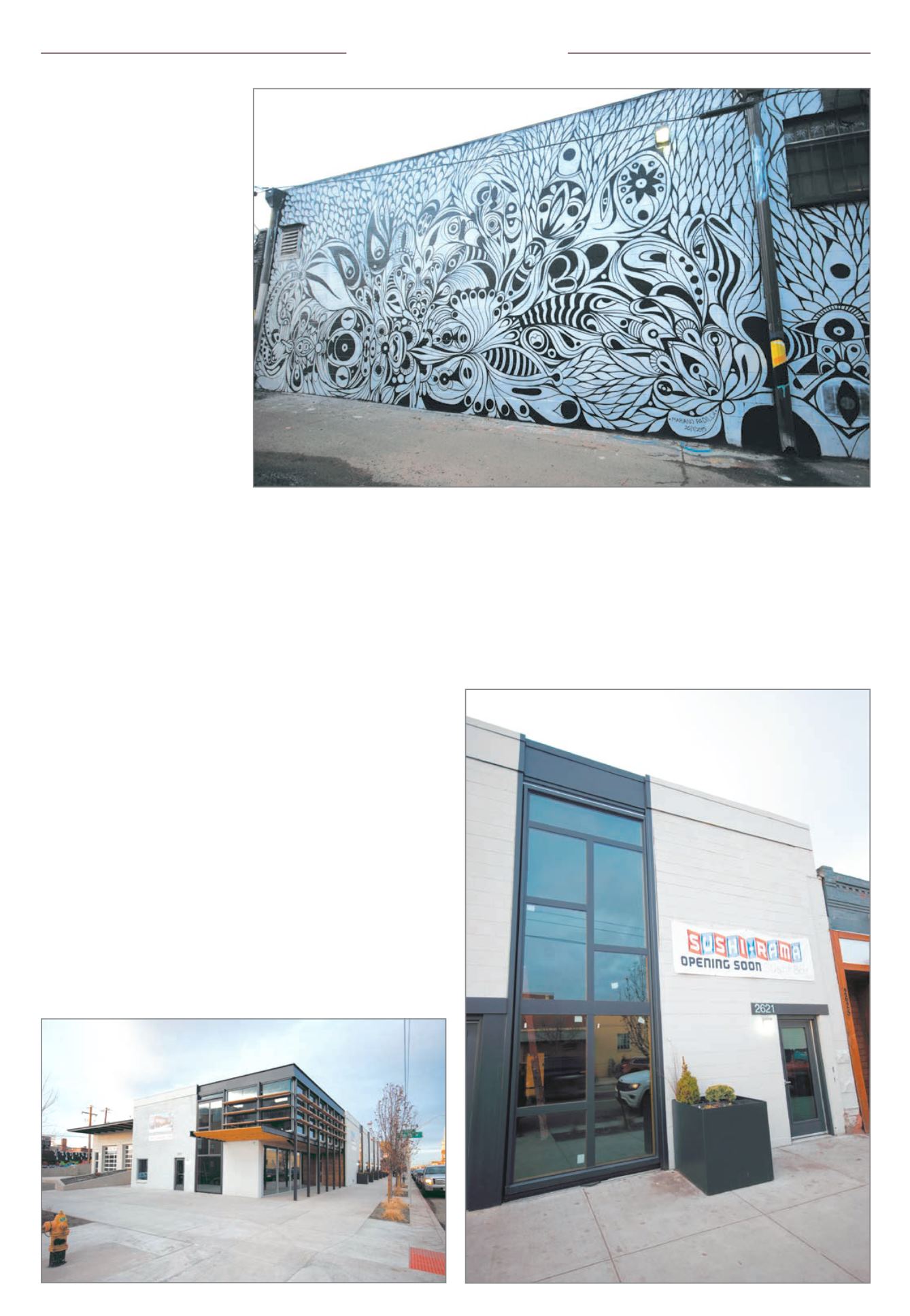

Page 14
— Retail Properties Quarterly — February 2015
creative, independent stores that are
doing really well, especially in the
Lower Highlands, River North and
Highlands areas,” said Bayer. “Now
national stores are taking a hard look
at what makes these successful.”
While malls remain one of the
staples of the retail industry, there are
several growing problems with them.
One of the biggest is the fact that
many malls and shopping centers
are so similar in look and feel, said
Stuart Zall, president of Zall Co. “I’ve
been asked, what’s my favorite mall
and I don’t have an answer because I
can’t differentiate that much between
them,” he said. “The big shopping
centers don’t have the creativity,
and retail stores in malls lose their
authenticity and ‘real feel’.”
Even though the traditional
enclosed malls are not dying and
won’t be going away any time soon,
Zall believes that some retailers in
malls may start closing or downsizing.
“Business models are changing and
retailers are looking at other options
for their stores,” he said. “Putting a
storefront along an active street is
becoming more appealing than being
in the middle of a large mall.”
According to Zall, an issue that
needs to be addressed is that Den-
ver historically has not had great
small-shop retail. Ari Stutz, a local
developer and partner with KenWolf
of Downtown Property Services, has
properties in the RiNo neighborhood
that are attempting to change that.
Instead of a single store creating its
own destination, Stutz andWolf are
redeveloping several buildings in RiNo
with the hope of creating a central
core for the community.
“We listened to the neighborhood
and what they wanted was small
retail spaces where creative, local
businesses could thrive,” said Stutz.
“The difficulty we have here is try-
ing to divide and break down large
industrial buildings into small retail
spaces.”
Stutz said once they get over that
hurdle and have the spaces ready to
show, it is easy to encourage tenants
to move in.
Jeff Osaka is one tenant who was
easily convinced to move to the area
and will be opening Sushi-Rama at
the 2601 Larimer building, which was
redeveloped by Downtown Property
Services.
“It’s like we’re creating our own
destination,” said Osaka. “There’s not
really any competition here; instead
each retailer helps out the other by
bringing business to this area.”
Osaka is not alone when it comes
to opening retail in the RiNo area.
Because there are many people who
work and live in this area, with even
more multifamily being developed,
the neighborhood is transitioning and
retail is trying to keep up with the
growing amount of traffic. “It is an
area that has been underserved for a
while and it is great to see so much
activity as retail tries to catch up,”
said Stutz.
For another retailer, Matthew Mor-
ris, owner of Matthew Morris Salon
and Skincare, opening a store in the
area was more about being origi-
nal and groundbreaking. Morris is a
renowned stylist, whose success with
his first store, a 6,200-square-foot
salon on South Broadway, encouraged
him to look in similar locations to
open another salon.
“We’re known for having a luxuri-
ous place where it doesn’t seem like
it should be,” said Morris. “So natural-
ly, for store No. 2 we wanted to be in
another area that needs pioneering.”
These retailers believe there’s a
mindset that customers want to go
somewhere unique and gritty. “The
retailers moving into the area could
drive some consumers away from
areas like Cherry Creek North or the
malls, and maybe even get them out
of their comfort zone a little bit and
create a new experience,” said Stutz.
The previous two examples dem-
onstrate that retail, no matter where
it is located, is driven by what can’t
be done online – restaurants and
services. This is also the reason why
restaurants are paying the most rent.
Whether it’s casual dining or high-
end, the restaurant industry is driving
the retail rental market. And restau-
rants, like retail stores, are focusing
on the consumer experience and
bringing them to a destination, with
breweries serving craft beer, farm-
to-table locally influenced food and
authentic designs intended to com-
bine the food with the experience.
Whether it is an individual store
creating a destination or a com-
munity of shops, retail is constantly
evolving and inventing new ways to
lure customers out from behind their
computers and the world of online
shopping, and into their stores.
There is more thought put into
where and when a store should be
developed by using the increasing
access to better data that provides
breakdowns of who is shopping, at
what time and what they are buying
or consuming.
s
Continued from Page 1 Shopping Trends2601 Larimer is a mixed-used development with restaurant, retail and office space.
Many urban alley murals can be found in the River North area, which adds atmosphere to the shopping experience.
Jeff Osaka’s Sushi-Rama will move into a store in the 2601 Larimer building.
















